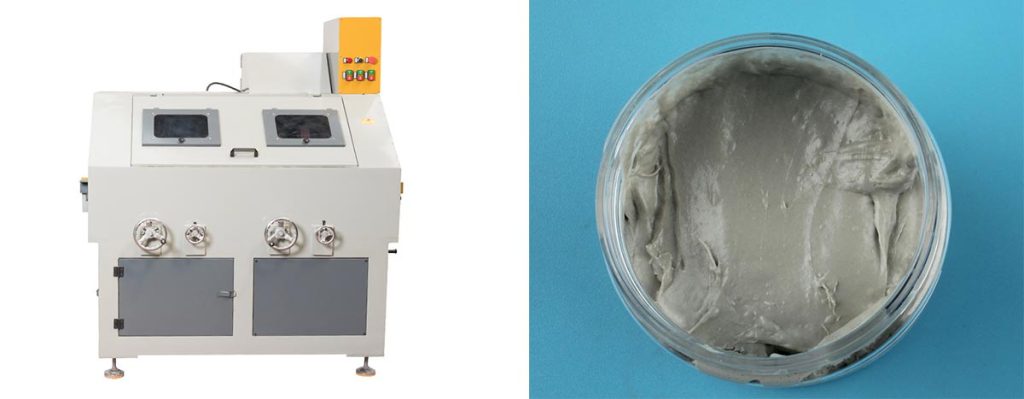

Selecting the correct polishing compound for stainless steel prevents surface damage and ensures a flawless finish. Using the wrong compound often leads to tarnishing, discoloration, or a dull appearance. Deep scratches may also occur, reducing both visual appeal and functionality. Pairing the right polishing compound with a buffing machine enhances efficiency and professional results.
Key Takeaways
- Picking the right polish avoids harm and gives a smooth shine.
- Each compound has a job: green rouge adds shine, black emery removes scratches.
- Think about the finish you want and the surface condition to get the best results.
Types of Polishing Compounds for Stainless Steel
Choosing the right polishing compound for stainless steel depends on the desired finish and the condition of the surface. Each type of compound offers unique properties suited for specific applications.
Rouge Compounds
Rouge compounds are widely used for achieving a high-luster finish. Green rouge, in particular, is ideal for final buffing operations on stainless steel. It enhances the surface with a mirror-like shine. Finishing rouges are also effective for improving the overall polish quality, making them a popular choice for professional-grade results.
| Rouge Type | Application Description |
|---|---|
| Green Rouge | Used in final finish buffing operations on stainless steel, providing a high luster. |
| Finishing Rouge | Improves high-quality polish for materials, enhancing the overall finish. |
Emery Compounds
Emery compounds, especially black emery, are known for their coarse abrasiveness. They effectively remove deep scratches and surface imperfections on stainless steel. These compounds are often used during the initial stages of polishing to smooth rough surfaces before finer polishing compounds are applied.
- Black emery is ideal for removing deep scratches.
- It smooths rough surfaces and prepares them for further polishing.
Green Polishing Compounds
Green polishing compounds are specifically designed for stainless steel. They provide a high-quality, mirror-like finish with significant color depth. These compounds are highly abrasive, making them suitable for achieving a flawless surface. They can also be used on other metals like brass.
| Compound Type | Abrasiveness | Finish Quality |
|---|---|---|
| Green Polishing Compound | High | High luster, significant color depth |
White Polishing Compounds
White polishing compounds are effective for hard metals like stainless steel. They are versatile, suitable for both cutting and intermediate polishing. These compounds enhance the brightness of the surface, making them a reliable choice for achieving a clean and polished look.
Greystar Polishing Compounds

Greystar polishing compounds are medium-grade and contain fine abrasives. They are effective in removing firescale and are best used with a fixed buffing machine. These compounds are ideal for achieving a polished finish on stainless steel surfaces, especially when a balance between abrasiveness and smoothness is required.
Factors to Consider When Choosing a Polishing Compound
Desired Finish (Mirror, Satin, etc.)
The desired finish plays a significant role in selecting the right polishing compound for stainless steel. Mirror finishes require compounds that deliver high reflectivity, such as green or white polishing compounds. Satin or brushed finishes, on the other hand, often involve less abrasive compounds to maintain the surface’s decorative patterns.
| Finish Type | Description |
|---|---|
| Mill or Matte | Requires less effort; often used as a starting point for further polishing. |
| Brushed Finish | Produces decorative patterns; may reduce corrosion resistance. |
| Mirror Finish | Highly reflective; hides welded metal and simplifies cleaning. |
| Gloss Finish | Improves corrosion resistance; achieves a chrome-like shine. |
Matching the polishing compound to the finish ensures optimal results without compromising the surface’s integrity.
Stainless Steel Grade and Surface Condition
Different grades of stainless steel require specific polishing approaches. Harder grades benefit from compounds with higher abrasiveness, such as silicon carbide or ceramic abrasives. Softer grades may require aluminum oxide or non-woven pads for a gentler touch.
| Finish Type | Description |
|---|---|
| No. 7 Finish | Semi-reflective, polished finish with some visible grain, higher reflectivity than No. 4 or 6. |
| No. 8 Finish | Mirror finish with maximum reflectivity, free of visible grain, used in decorative applications. |
| Bead Blast Finish | Uniform, matte, non-reflective surface achieved by blasting with fine glass beads. |
| Colored | Electrolytically colored finishes producing various hues through oxide layer manipulation. |
| Etched | Patterns created by selectively removing areas of the metal surface using chemical solutions. |
Surface condition also matters. Deep scratches may require emery compounds, while finer imperfections can be addressed with rouge or greystar compounds.
Compatibility with Tools and Equipment

The polishing compound must align with the tools being used. For instance, a buffing machine works best with solid bar compounds, while handheld tools may require liquid or paste forms. Using incompatible compounds can reduce efficiency and lead to uneven finishes. Always check the manufacturer’s recommendations for tool compatibility.
Environmental and Safety Considerations
Safety and environmental factors should not be overlooked. Some compounds release dust or fumes during use, requiring proper ventilation and protective gear. Non-toxic and eco-friendly options are available for those prioritizing sustainability. Always follow safety guidelines to protect both the user and the environment.
Conclusion
Selecting the right polishing compound for stainless steel ensures a flawless finish tailored to specific needs. Evaluating the desired finish and surface condition helps in choosing the most suitable compound. Proper application techniques enhance results. Cleaning the surface, using abrasives progressively, and applying the compound with a buffing machine are effective methods. Safety measures, such as wearing gloves and goggles and working in ventilated spaces, protect users during the process. Experimenting with different compounds and techniques allows users to achieve professional-grade results while maintaining safety and efficiency.
